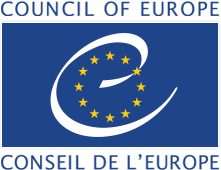 Centre européen pour les langues vivantes (CELV)
Centre européen pour les langues vivantes (CELV)
Accord partiel élargi du Conseil de l’Europe (Graz) - www.ecml.at
Le CELV (33 Etats membres) a pour mission la mise en œuvre des politiques linguistiques – élaborées dans le cadre du Programme Politiques linguistiques (Strasbourg) – et la promotion d’approches innovantes à l’enseignement et l’apprentissage des langues vivantes. Le Centre organise en particulier des projets en matière d’éducation aux langues se traduisant par des ateliers ou séminaires et offre une plateforme de coopération avec des experts, des associations et des institutions.
Autres partenaires
Commission européenne
Organe exécutif de l’Union européenne (Bruxelles) qui veille à l’application des dispositions des traités et des décisions prises par les institutions de l’Union.
 Section Education et Formation
Section Education et Formation
ALTE - The Association of Language Testers in Europe (L'Association des organismes certificateurs en Europe) (statut participatif auprès du Conseil de l'Europe)
 www.alte.org
www.alte.org
Association d’institutions au sein de l’Europe qui produisent des examens et des certifications pour les apprenants en langues. Chaque membre fournit des examens de la langue parlée en tant que langue maternelle dans leur pays ou région.
Conseil européen pour les langues (CDL)
 www.celelc.org
www.celelc.org
Association permanente et indépendante, le CEL est une niche unique dans le panorama linguistique en Europe par ses contacts avec les universités, institutions de langues, le Conseil de l’Europe et la Commission, en assurant une médiation à divers niveaux pour envisager, anticiper et adapter le paysage linguistique dans une vision à long terme
EALTA - Association européenne pour la conception de tests et l’évaluation en langue (statut participatif auprès du Conseil de l'Europe)
 www.ealta.eu.org
www.ealta.eu.org
Une association professionnelle destinée aux concepteurs de tests et l’évaluation en langues en Europe. Son objectif est de promouvoir la compréhension des principes théoriques de l’élaboration de tests et de l’évaluation en langues ainsi que l’amélioration et le partage des pratiques concernant les tests et l’évaluation à travers l’Europe.
EAQUALS - Evaluation & Accreditation of Quality in Language Services (Evaluation et accréditation de la qualité des services des langues) (statut participatif auprès du Conseil de l'Europe)
 www.eaquals.org (site en anglais)
www.eaquals.org (site en anglais)
Association paneuropéenne d’instances de formation en langues, visant à promouvoir et garantir la qualité dans les institutions d’enseignement des langues vivantes. Plus...
 The integration and education of children and adolescents from migrant backgrounds are among the most urgent challenges facing many member states of the Council of Europe from the point of view of social cohesion and inclusion. As stressed in the Council of Europe’s White Paper on Intercultural Dialogue, integration is a two-way process.
The integration and education of children and adolescents from migrant backgrounds are among the most urgent challenges facing many member states of the Council of Europe from the point of view of social cohesion and inclusion. As stressed in the Council of Europe’s White Paper on Intercultural Dialogue, integration is a two-way process. 


/https%3A%2F%2Fprofilepics.canalblog.com%2Fprofilepics%2F1%2F0%2F1076071.jpg)